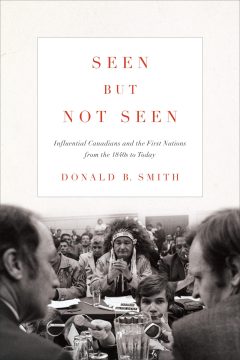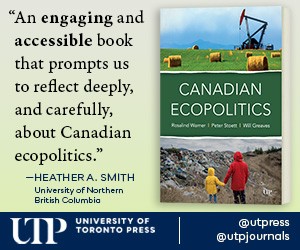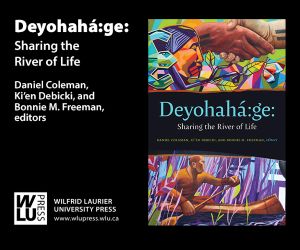Justin Trudeau, friend of Indigenous people, is descended from “Indian” fighters. A street plaque in southeast Montréal once commemorated the 1662 exploits of Etienne Trudeau in a local skirmish with First Nations.
Prime Minister Trudeau shed a tear for Chief Poundmaker, yet in 2019 cut short Grassy Narrows protesters who crashed a Liberal Party fundraiser with the remark: “Thank you for your donation!”
Juxtaposition is a recurring theme. The Prime Minister says often, “No relationship is more important to Canada than the relationship with Indigenous peoples.” Yet he will not name any First Nation as representative of the Queen. It is hardly ground-breaking. A Cree man was named Lieutenant Governor of Alberta in 1974.
Such contradictions are commonplace, historian Donald B. Smith writes in Seen But Not Seen. Smith recalls a deputy superintendent of the Department of Indian Affairs who ruled over 100,000 Treaty Indians yet “had no close Indigenous friends.” He quotes the Anglican bishop of Toronto in 1891: “Not a man in a thousand is apt to give a spontaneous thought to the Indians all year round.”
Overtly racist and homicidal anti-Indigenous outbursts are uncommon in Canadian history. We know enough to say the right thing. No less than John A. Macdonald as a 24-year old lawyer defended a Tyendinaga Mohawk at a murder trial in Kingston. As prime minister he appointed a Mohawk woman to a civil service position and had “mixed views of Indigenous peoples,” writes Smith. Here is Macdonald speaking in 1880. But for the arcane language, the sentiment is Trudeauesque:
“We must remember they are the original owners of the soil of which they have been dispossessed by the covetousness or ambition of our ancestors. Perhaps if Columbus had not discovered this continent, had left them alone, they would have worked out a tolerable civilization of their own. At all events, the Indians have been greater sufferers by the discovery of America and the transfer of it to a large white population.”
Seen But Not Seen is a meticulously-researched and beautifully written documentary of the great contradiction of our national life. The same prime minister who hailed Indigenous peoples as original owners of the soil would call them savages and cut their food ration. “Without any doubt Canada has treated the Aboriginal peoples badly and continues to do so today,” says Smith. “Writing as historians, we must record this.”
Seen But Not Seen presents striking bookends to this fact.
On the one hand, famed writer Stephen Leacock in 1941 mistakenly claimed First Nations in pre-Confederation Canada were “too few to count.” In fact they numbered 175,000 in the West alone. “Their use of the resources of the continent was scarcely more than that by crows and wolves,” wrote Leacock.
On the other hand, Professor Paul Wallace of Toronto in 1946 published The White Roots Of Peace, a history of the Iroquois Confederacy so profound Wallace was made an honourary member of the Mohawks of Akwesasne. His book remains in print to this day. “The White Roots Of Peace acted as a counterbalance to the contemporary image of North American Indians as ‘bloodthirsty primitives’,” notes Seen But Not Seen.
The yin and yang continues.
By Holly Doan
Seen But Not Seen: Influential Canadians And The First Nations From 1840s To Today, by Donald B. Smith; University of Toronto Press; 488 pages; ISBN 9781-4426-27703; $24.71









